21 Amazing Benefits Of Mulberries (Shahtoot) For Skin, Hair, And Health
Get improved vision, a good appetite, and stronger immunity with these red berries.
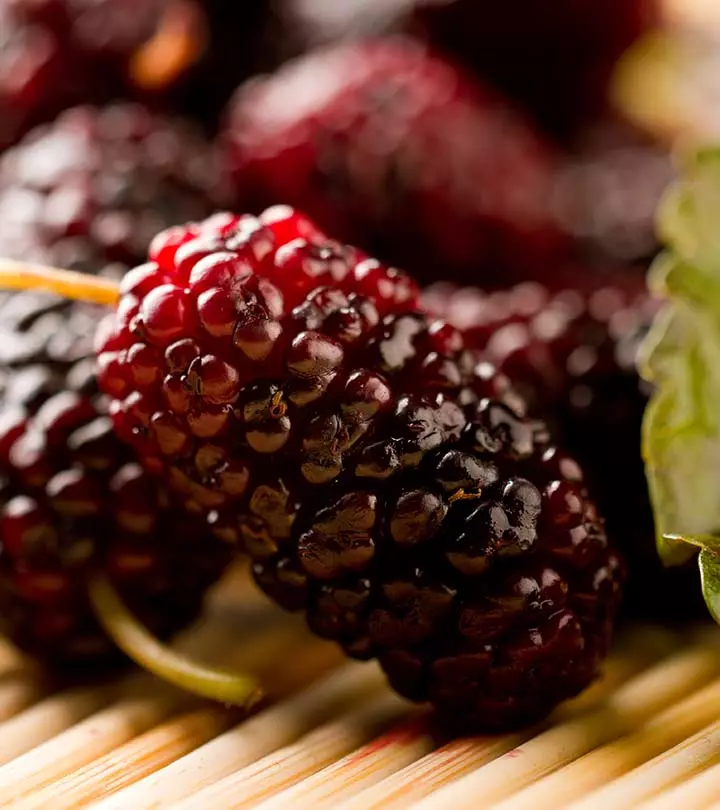
Image: Shutterstock
A handful of mulberries freshly picked off the bountiful branches – if that makes you nostalgic, you must be familiar with the many benefits of mulberries as well. But if you have had mulberries just for their sheer juicy taste and were unaware of their many health benefits, fret not – we got you covered.

Also commonly known as “Shahtoot”, mulberries, like most berries, are chock full with important nutrients, polyphenols, anthocyanins, and other antioxidants. These not only protect your body from the harmful effects of toxic free radicals but also help improve your skin, hair, and overall health. In this article, we take a detailed look at the key benefits of mulberries and the ways you can include them in your diet. Read on to learn more.
 Know Your Ingredient: Mulberries
Know Your Ingredient: MulberriesWhat Is It?
A small, colorful fruit that grows on a tree called Morus Alba.
What Are Its Benefits?
It helps maintain digestive and heart health, improves vision, promotes brain health, clears dark spots and blemishes, treats dry skin, and promotes hair growth.
Who Can Use It?
While it is safe for consumption and application for all, those with dry skin might find it particularly beneficial.
How Often?
Less than 40 grams should be consumed daily.
Caution
Avoid if you have any kidney-related problems, low blood sugar, or experience any allergic reactions.
In This Article
What Are Mulberries?
Simply put, mulberry is a berry that comes from a tree called Morus Alba. We usually think that mulberries are red, but there are white, black, and blue versions of them too. Mulberry trees can grow up to 10 feet per year and reach full maturity at 30 feet. The leaves, which are the favorite food of silkworms, fall off in winter and grow back the following season. Mulberries ripen over a few months and fully mature in May.
The structure of the mulberries is very similar to that of the blackberry (not the phone!). They taste similar to a grapefruit. They are sweet and can be eaten in the dry form.
Mulberries have interesting names in local dialects. They are called ‘Shahtoot‘ in Hindi, ‘Mulberi’ in Malay, ‘Morbær’ in Norwegian, ‘Mora’ in Spanish and ‘Mullbär’ in Swedish. ‘Kambali Pandu‘ in Telugu, ‘Mucukkattaip palam’ in Tamil, ‘Hippunerale‘ in Kannada, ‘Shetur‘ in Gujarati, ‘Tutee‘ in Marathi, and ‘Shatut‘ in Punjabi. The names are quite tricky to remember, so let’s just stick to ‘mulberry.’ Whatever the name is, mulberries are delicious and nutritious.
Mulberries are extensively grown in the warm regions of Asia, Africa, and America. So, if you live in these areas, you can easily get hold of a fresh batch and gorge on gleefully.
Also, there are a handful of interesting recipes of jams, jellies, smoothies, pancakes, desserts, sauces, and wine that incorporate mulberries in them and some of them are mentioned below for you to try.
Now, let’s get into the scientific details of mulberries. Mulberries are scientifically known as ‘morus,’ and are a part of a genus of flowering plants called the Moraceae. Moracea includes 10-16 species of deciduous trees that produce mulberries.
Mulberries are related to figs and breadfruit. Technically, mulberries are not single berries. Each mulberry is a concentrated fruit, and the fruits in the aggregation are arranged concentrically around a central axis.
Mulberries were used in Asia for centuries. The white mulberry, in specific, is native to China. Also, the same mulberry type was taken to Europe centuries ago and naturalized. Soon, the same white mulberry was introduced in colonial America mainly to support the silkworm industry as mulberry leaves are the only food for silkworms.
The red mulberry is native to the eastern United States and the Gulf Coast. The black mulberry is native to western Asia and has also been grown in Europe from before the Roman ages.
 Trivia
TriviaNow, let’s go back in time and find out more about the history of mulberries. Shall we?
Key Takeaways
- The low-calorie count of mulberry makes it a healthy snack.
- The high fiber content of mulberry aids digestion and relieves constipation and bloating.
- The antioxidant and phytonutrient content of mulberry gives it cancer-inhibiting properties.
- It moisturizes, removes free radicals, removes spots, and makes the skin young and fresh.
- All the parts of the mulberry plant are edible, and you can also prepare tea from its leaves.
History Of Mulberries
According to a study by Purdue University, mulberries were used in Chinese herbal medicine for centuries to treat heart diseases, diabetes, anemia, and arthritis. There is a Babylonian myth that attributes the reddish-purple color of the mulberries to the deaths of two lovers in an ancient tragic love story. The history of mulberries is connected to the growth of the silk industry. Mulberry leaves were used to fatten the silkworms in the Orient regions. The spread of mulberry trees across the world can, in a way, be attributed to the need of mulberry leaves for the silkworm industry.
Mulberries slowly spread from the Oriental countries to the European countryside. Even today, you can see mulberry trees being grown in Turkey, the land where the world famous Turkish silk carpets are produced.
Mulberries were popular with the ancient Greeks too, and the fruit was dedicated to Minerva, the goddess of wisdom. The first mulberry was planted in England in the 1500s.
It definitely is quite a healthy fruit. Let’s learn about what makes it so nutritious below.
Why Are Mulberries Good?
Mulberries are full of nutrients and vitamins. A cup of raw mulberries contains only 60 calories, making them a light and tasty snack, yet providing the nutrients necessary for the body.
Mulberries contain carbohydrates that convert sugar into glucose, thereby providing energy to the cells. Consuming mulberries increases your iron intake and ensures ample supply of oxygen to the tissues.
Mulberries are rich in Vitamin K and C. Vitamin C increases tissue strength and boosts collagen synthesis. Vitamin K helps in bone tissue development and is an essential component for blood clotting.
They also contain Riboflavin (also known as B-2), which protects your tissues from free radicals and helps in transferring oxygen throughout the body.
Consuming any form of the mulberry fruit – whether the fruit itself, its powder, or juice – is beneficial to you. You can even apply mulberry extracts on your skin – your skin will become healthy and shiny.
Let’s learn about the nutritional value of mulberries in detail below.
Nutrition Data Of Mulberries
Mulberries are a powerhouse of nutrients. They contain fibers, sugars, carbohydrates, proteins, lipids, minerals, and vitamins. They are an excellent source of protein as well. 3 ounces of mulberries have 9 grams of protein. They are also a rich source of iron and calcium.
Mulberries are also a reservoir of antioxidants. An antioxidant called Resveratrol is found abundantly in mulberries. Other antioxidants found in mulberries are cyanidini A naturally occurring pigment that exhibits a powerful antioxidant and has been proven to have neuroprotective properties and is present in many berries and cherries. , chlorogenic acid, Myricetini A flavonoid in vegetables, fruits, foods, and drinks that has a wide range of beneficial properties, including antioxidant, anticancer, antidiabetic, and anti-inflammatory effects. , and Rutin. Apart from these, mulberries are also a rich source of polynutrientsi Organic substances, found in plants and particular fruits and vegetables, that can enhance your phytonutrients and health. like anthocyanin, flavonoids, lutein, zeaxanthin, B carotenes, and A carotene.
There is not much difference between the nutritional profiles of the different types of mulberries. The black mulberries are usually tastier than the white mulberries, but their nutrition profile is pretty much the same.
| Nutrient Value | Unit | Value per 100.0g | 1 cup 140g | 10 fruit 15g | ||||
|---|---|---|---|---|---|---|---|---|
| Proximates | ||||||||
| Water | g | 87.68 | 122.75 | 13.15 | ||||
| Energy | kcal | 43 | 60 | 6 | ||||
| Protein | g | 1.44 | 2.02 | 0.22 | ||||
| Total lipid (fat) | g | 0.39 | 0.55 | 0.06 | ||||
| Carbohydrate, by difference | g | 9.80 | 13.72 | 1.47 | ||||
| Fiber, total dietary | g | 1.7 | 2.4 | 0.3 | ||||
| Sugars, total | g | 8.10 | 11.34 | 1.22 | ||||
| Minerals | ||||||||
| Calcium, Ca | mg | 39 | 55 | 6 | ||||
| Iron, Fe | mg | 1.85 | 2.59 | 0.28 | ||||
| Magnesium, Mg | mg | 18 | 25 | 3 | ||||
| Phosphorus, P | mg | 38 | 53 | 6 | ||||
| Potassium, K | mg | 194 | 272 | 29 | ||||
| Sodium, Na | mg | 10 | 14 | 2 | ||||
| Zinc, Zn | mg | 0.12 | 0.17 | 0.02 | ||||
| Vitamins | ||||||||
| Vitamin C, total ascorbic acid | mg | 36.4 | 51.0 | 5.5 | ||||
| Thiamin | mg | 0.029 | 0.041 | 0.004 | ||||
| Riboflavin | mg | 0.101 | 0.141 | 0.015 | ||||
| Niacin | mg | 0.620 | 0.868 | 0.093 | ||||
| Vitamin B-6 | mg | 0.050 | 0.070 | 0.008 | ||||
| Folate, DFE | µg | 6 | 8 | 1 | ||||
| Vitamin B-12 | µg | 0.00 | 0.00 | 0.00 | ||||
| Vitamin A, RAE | µg | 1 | 1 | 0 | ||||
| Vitamin A, IU | IU | 25 | 35 | 4 | ||||
| Vitamin E (alpha-tocopherol) | mg | 0.87 | 1.22 | 0.13 | ||||
| Vitamin D (D2 + D3) | µg | 0.0 | 0.0 | 0.0 | ||||
| Vitamin D | IU | 0 | 0 | 0 | ||||
| Vitamin K (phylloquinone) | µg | 7.8 | 10.9 | 1.2 | ||||
| Lipids | ||||||||
| Fatty acids, total saturated | g | 0.027 | 0.038 | 0.004 | ||||
| Fatty acids, total monounsaturated | g | 0.041 | 0.057 | 0.006 | ||||
| Fatty acids, total polyunsaturated | g | 0.207 | 0.290 | 0.031 | ||||
| Cholesterol | mg | 0 | 0 | 0 | ||||
| Other | ||||||||
| Caffeine | mg | 0 | 0 | 0 | ||||
Health Benefits Of Mulberries
1. Improve Digestive Health
Mulberries are a boon for your stomach. They relieve constipation and are also an excellent way to lose weight. Mulberries contain a good amount of dietary fiber. Your body needs dietary fiber to facilitate proper digestion. It does so by bulking up a stool in the stomach and facilitating the movement of food through the digestive tract. This process helps in relieving constipation, bloating, and stomach cramps (1).
Healthy digestion helps in efficiently maintaining optimum weight. Research conducted by Italy’s F. De Ritis Institute and the Catholic University of Sacred Heart to determine the weight loss capacity of mulberries. It was found out that those who consumed mulberries as part of a balanced diet plan of 1300 calories decreased to about 10% of their total body weight in nearly three months.
The researchers also noticed that the group which consumed mulberries reduced drastically in the waist and thigh regions (2). So, all you people who want a slender waist and toned thighs, you know what to eat.
2. Lower Cholesterol
Eating mulberries is a good way to lower the levels of bad cholesterol in your body, which in turn helps in preventing cardiovascular problems (3).
3. Control Blood Sugar Levels
White mulberries, in particular, help in keeping a check on the sugar levels of the body. Certain chemicals present in white mulberries are similar to the medicine used to treat type 2 diabetes.
A study conducted on people with normal blood sugar levels found that consuming a mulberry leaf extract significantly reduced the rise in total blood glucose level and total insulin level after ingesting maltodextrin (a type of carbohydrate) over 120 minutes (4).
4. Reduce Cancer Risk
If you are looking to protect yourself from cancer, then mulberry is what you should be looking for. Mulberries are rich in antioxidants and phytonutrients that help in stopping the growth and spread of tumor cells and protect you from cancer. (5)
Mulberries are full of anthocyanins that help in keeping cancer cells at bay (6). They also contain resveratrol, which has anti-cancer properties (7). Resveratrol cancer inhibiting properties help in fighting colon cancer, skin cancer, prostate cancer, and thyroid (8).
5. Improve Blood Circulation
Mulberries improve blood flow through the body, control blood pressure, and cleanse the blood. The antioxidants present in mulberries help in improving the function of the blood vessels by keeping them supple and dilated, which leads to blood pressure control as there is a free flow of blood from the heart to other parts of the body. Mulberries encourage the production of red blood cells as they are rich in iron.
Mulberries contain polyphenols that keep the blood vessels healthy. They also contain potassium, which lowers the blood pressure (9).
Mulberries have been used as a remedy for blood health since ages. Ancient Chinese medicine incorporated them in their blood tonics that were used to cleanse the blood and increase its production.
6. Cure Anemia
Mulberries are great for curing anemia as they are rich in iron (10). They also cure the symptoms of anemia such as fatigue and dizziness.
7. Better Heart Health

The fiber, antioxidants, and flavonoid content of mulberries facilitate heart health. They help in maintaining a consistent flow of blood, thus preventing heart attacks and strokes. Mulberries are rich in polyphenols, which are considered healthy for the heart (11).
8. Good For Vision

Like carrots, mulberries too are good for your eyes. They improve your vision and protect your eyes from free radicals that are a cause of retinal degeneration and loss in eye sight (12). Mulberries contain zeaxanthin, which helps in reducing oxidative stress in the cells that form your eyes. The carotenoids present in mulberries assist in preventing cataracts and macular degeneration (13).
9. Promote Brain Health
Research suggests that mulberries age-proof the brain, keeping it young and alert. They also provide the calcium needs of the brain, hence keeping it hale and healthy (14). Mulberry also makes for an excellent treatment to keep Alzheimer’s at bay (15).
10. Improve Immunity
Mulberries help in improving the immune system by activating the macrophages through the alkaloids present in them. Macrophages keep the immune system alert at all times. Mulberries also contain Vitamin C, which is another immunity strengthening element (16).
11. Build Bone Tissue
Mulberries contain Vitamin K, calcium, and iron, which is the best combination of nutrients to maintain and build strong bone tissues and bones (17). These nutrients help the bones reverse the signs of bone degradation and prevent bone disorders such as osteoporosis, arthritis, etc.
12. Rich Source Of Antioxidants
Mulberries contain an abundance of antioxidants. They contain a high concentration of the powerful antioxidant resveratrol, which is a natural antibiotic and helps in reducing heart risks. It also keeps a check on the blood pressure (18).
13. Prevent Flu And Cold

Flu and cold are a menace. Don’t you agree? Well, eating mulberries could solve that problem for you. The white mulberry fruit, in particular, has been used in folk remedies for cold. White mulberries are considered to be an astringent, bactericide and tonic and work correctly to prevent and treat flu and cold (19). They also contain Vitamin C and flavonoids, which prevent cold and flu.
14. Improve Liver Health
Mulberries can be used to make a blood tonic, because when consumed, they nourish and purify the blood in the liver (20). Mulberries have the ability to strengthen the liver, and also contain iron that works well to maintain liver health.
15. Are An Anti-Inflammatory Agent
The presence of resveratrol in mulberries induce anti-inflammatory properties in it. Mulberries also contain anthocyanins that help in preventing inflammation (21). Mulberries are sometimes even used as a natural alternative to allopathic anti-inflammatory drugs.
Benefits Of Mulberries For Skin
1. Effective Anti-Aging Agent
Mulberries have the ability to make you look young and fresh. They contain resveratrol, which protects the skin from harmful UV rays (22). Mulberries are abundant in antioxidants, which are great anti-aging agents. They keep your skin blooming and free of wrinkles (23). The antioxidants in mulberries such as beta-carotene neutralize the free radicals that damage skin and cause fine lines. Mulberries also provide vitamins A, C and E, lack of which leads to wrinkles.
2. Clear Out Dark Spots And Blemishes

The antioxidants in mulberries prevent the occurrence of blemishes on the skin. Mulberries help regulate the melanin synthesis in your skin, which naturally clears off the dark spots (24). They contain antioxidants that moisturize, unclog pores, and remove toxins from your skin, keeping it fresh and vibrant. Mulberries effectively even out your skin and make it look naturally beautiful and healthy.
3. Treat Dry And Sensitive Skin
Lack of Vitamins A and E cause dry skin. Mulberries are rich in those vitamins, and help in treating dry and delicate skin. They hydrate your skin from within and promote skin health. Mulberry root extracts soothe irritated skin.
4. Make Skin Soft And Radiant
You can simply sit and eat a bowl of mulberries every day to get soft and radiant skin because they are rich in minerals that provide elasticity, flexibility, and nourishment to the skin (16).
 Trivia
TriviaBenefits Of Mulberries For Your Hair
1. Promote Hair Growth

The presence of antioxidants in mulberries help in keeping your hair healthy, promote hair growth, and prevent breakage.
2. Help In the Retention Of Natural Hair Color
Mulberries, in combination with some traditional Chinese herbs, can help in preventing early hair graying. The nutrients in mulberries such as calcium, iron, Vitamin C, and B play a vital role in doing so (17).
So many benefits – don’t you feel like buying them right now and start eating them? Then look no further than below. We included a list of places where you can find mulberries.
How To Incorporate Mulberries Into Your Diet
It is not just the mulberry fruit that you can eat. The leaves, bark, and stem of the plant can also be made into edible items.
You can either eat the mulberry fruit raw, or dry and eat them as an energy snack by mixing it with mashed bananas or other dry fruits. Or, you can make mulberry juice and down it in no time.
You can also make tonics and syrups with mulberries and consume it regularly to benefit from its goodness.
Athena Lamberis, a blogger, remembers picking and consuming mulberries straight from the trees. On her blog, she recounts, “Springtime in Johannesburg brought all these childhood memories back, getting sugar high from trees and overdosing on the tart ruby mulberries (i).”
You can also dry the mulberry leaves and make tea with them. Mulberry tea is as beneficial as eating the raw mulberries.
Uses of Mulberries
As mentioned earlier, mulberries and their leaves can be used to make teas and other beverages. Apart from this, they make great fillings for pies as well as can be used to make a wide range of delicious desserts. Of all the berries that exist, mulberries have the highest content of antioxidants, making them healthy no matter how you prepare them. Mulberry smoothies taste sumptuous!
There are many different ways that you can use this berry in your diet. The fruit and leaves have beneficial properties that you can use to promote overall health.
If you are looking for a natural way to cleanse your body, get glowing skin and strong, healthy hair, mulberries are the best choice.
Every part of your body benefits from this amazing berry, so it is a must to add it to your diet!
How To Select And Store Mulberries
Black mulberries are tastier than the other types of mulberries. They are considered the tastiest and have a rich, sweet flavor. They taste best from May to August. The other variants, which include the red and white mulberries are available until spring. Red mulberries have a strong, sweet flavor with a slight tartness, whereas white mulberries are mildly sweet and less flavorful than black or red mulberries. You may choose any of these varieties as per their taste and availability.
If you are buying them from a store, you should make sure that they are plump and have a vibrant color. Unless you are getting white mulberries, make it a point to avoid mulberries that are pale in color as this shows that they have not ripened yet. Look for fresh mulberries and avoid those that are bruised, bleeding or sunken.
If you have a mulberry tree, it is not a hard task to harvest the fruits. All you need is a tarp to cover the ground under its branches and shake them to make the berries fall on the tarp. If it is time for the fruits to mature, you will need to repeat the process every alternate day.
Once you have collected the berries, put them in baskets. Remember not to make the baskets too full as the ones at the bottom will get crushed.
The next step is to store them in containers that are airtight. You can wash the berries before storing them or wash them before you use them. These fruits can be stored in your refrigerator for about three days.
If freezing them after harvest is better for you, you can wash and dry them gently by patting them with a soft cloth or tissue and storing them in a sealed bag. You can leave mulberries in your freezer for about three months.
You can also dry out these delicious berries. Drying them involves removing the moisture to enhance the fruit’s sugars and flavor concentration. This process allows mulberries to be preserved for extended periods while maintaining their nutritional value.
Dried mulberries have a unique flavor profile that distinguishes them from fresh mulberries. The drying process intensifies their natural sweetness, resulting in a tart taste with hints of honey-like sweetness. Their texture becomes chewy, similar to raisins. The fruit’s earthy undertones become more pronounced, which makes a delightful and convenient snack.
Dried mulberries are also perfect for adding some natural sweetness to cereals, yogurt, and baked goods.
Let’s get to making something with mulberries now. Following are some tasty recipes for mulberries.
Mulberry Recipes
1. Mulberry Sorbet
Sorbets make for a perfect ending to a meal or to eat away when you feel like having something ice-cream like but without the calories.
All you need are
- 1 cup sugar
- 1 cup water
- 5 cups mulberries or blackberries
- 2 tablespoons cassis or Port Wine
Time Taken To Make
1 hour and 20 minutes
How To Make
- Clean and keep the mulberries aside.
- Boil sugar and water in a container with medium heat. Simmer it for 3 to 4 minutes.
- Pick off all the green stems from the mulberries. Turn the heat off and let it cool.
- Blend the mulberries and pour the sugar syrup on the mulberry paste. Make it into a puree. Sieve the mulberry puree to remove any seeds or stems.
- Pour a bit of Port Wine into it and chill the mixture in the freezer for about an hour. Then, pour it into an ice cream maker and whip up a sorbet.
2. Mulberry Banana Mousse
Who doesn’t like mousse? Soft and fluffy, they are a treat to your taste buds. Let’s learn how to make it with mulberries, shall we?
All you need are
- 10 1/2 ounces silken tofu
- 1 frozen banana (medium, chopped)
- 1 cup mulberries (frozen)
- 1 cup maple syrup
- 2 tablespoons lemon juice
- 1 teaspoon vanilla extract
- 3/4 cups mulberries (fresh, for garnish)
Time Taken To Make
25 minutes
How To Make
- Place a bowl in the freezer. Blend the tofu until it becomes smooth. Smash the frozen bananas and mulberries into the tofu.
- Add maple syrup, lemon juice, and vanilla to the mixture. Blend the three until the texture of the mixture becomes smooth.
- Now, take out the bowl from the freezer and pour the mix into it. Cover the bowl with a plastic wrap and aluminum foil and freeze it for 4 hours.
- After 4 hours, your mousse is ready to eat! Garnish with fresh mulberries and eat away.
Add these delicious recipes to your diet to reap the multiple mulberry benefits. Now, let’s check some mulberry facts. Should be fun.
Facts About Mulberries
- Mulberry leaves grow in bunches called the ‘drupes’, which is a favorite of silkworms. The silkworms gorge on the leaves ruthlessly, becoming fatter and fatter. Nom Nom Nom.
- All the parts of the mulberry tree have been invariably used in one way or the other in ancient Chinese herbal medicine.
- Mulberry trees grow up to 30 to 80 feet in height. The white mulberry variety is the largest, and the black mulberry is the smallest, and only grows as a shrub.
- Mulberry trees produce fruit only after 10 years of its plantation.
- White mulberry leaves were used by ancient Romans to treat diseases of the mouth, trachea and the lungs.
- Mulberry essential oil has a great fragrance and provides many benefits. It can be added to lotions, shampoos, soaps and candles.
 Fun Fact
Fun FactWe spoke of all things good about mulberries. Now, let’s check the other side, the not so good side.
Side Effects Of Mulberries
Despite their incredible benefits, these delicious berries can also be harmful under certain circumstances. Here’s an overview of their side effects:
- Mulberries are rich in potassium, which can cause complications for those with kidney disorders.
- Mulberries can lower blood sugar levels and cause hypoglycemiai A condition when your blood sugar (glucose) level is below the normal range. It is frequently brought on by taking too much insulin or not eating enough. .
- Mulberries can cause allergic reactions in some people like skin rashes, itching, and swelling.
- Some people experience hallucinations after consuming mulberries.
- Pregnant and breastfeeding women should consult their doctor before consuming mulberries.
Apart from these, mulberries may also cause gastrointestinal discomfort. Therefore, it’s better to gain a complete understanding of the side effects of mulberries before consuming them.
Do all these side effects mean that you should avoid mulberries? Certainly not! Instead, there are a few precautions you should keep in mind. Check them out in the following section.
Precautions For Consuming Mulberries
Here are some things you should keep in mind to reduce the risk of mulberry’s side effects:
- If you are trying mulberries for the first time, start with a small amount to see how your body reacts. If you notice any irritation, you might be allergic to them. In this case, stop consumption and visit a doctor immediately.
- If you are diabetic, consume mulberries only on the recommendation of a doctor, as they are high in sugar.
- If you are using mulberries in recipes, avoid combining them with other high-sugar ingredients to avoid excessive sugar intake.
- If possible, choose organic mulberries to avoid pesticide residues that may have adverse effects on your health.
- If the mulberries are not organic, soak them in vinegar-water solution for a few minutes to kill germs. Rise them with plain water before consumption.
Infographic: How Mulberries Can Benefit Your Skin And Hair
Mulberries not only look gorgeous and taste delicious, but also are replete with beneficial nutrients that can positively affect your skin and hair. The benefits are the same whether you consume them raw, baked, or as jams or use them in topical remedies. Check out the infographic below to find out what mulberries can do for your hair and skin.
Some thing wrong with infographic shortcode. please verify shortcode syntax
Mulberries have an impressive nutritional profile with a sweet flavor. The benefits of mulberries can be attributed to their plant compounds and other essential vitamins and minerals. Intake of mulberries may improve digestive health, lower cholesterol levels, control blood sugar levels, reduce cancer risk, and improve blood circulation. In addition, the antioxidants in mulberries, like beta-carotene, act as effective anti-aging agents. However, excess consumption of mulberries may cause kidney disorders, allergic reactions, and hallucinations in some people. Hence, take them in moderation and consult your doctor in case of any emergencies.
Frequently Asked Questions
Are all mulberries edible?
All mulberries usually are edible, but if they are wild mulberries, then you must check before randomly eating them.
Are blackberries and mulberries the same thing?
No, they are not. The two may be similar in certain ways but have their uniqueness and properties.
Is mulberry acidic or alkaline?
All berries, including mulberries, are alkaline.
Can you eat mulberry stems?
Yes, the mulberry stems are edible. Although It’s best to remove the stems when preparing jams and other recipes, they don’t impact the taste or consistency.
Is black or white mulberry better?
Black mulberries have more antioxidants and taste better than white mulberries.
Should you soak mulberries?
Yes. Soak mulberries in salt water for 3 minutes to remove dirt, and rinse them with plain water before consuming.
Illustration: Amazing Benefits Of Mulberries (Shahtoot) For Skin, Hair, And Health
_for_skin_hair_and_health_illustration.jpg.webp)
Image: Stable Diffusion/StyleCraze Design Team
Delve into this video to discover the amazing health benefits of mulberry! This superfood boosts immunity and aids digestion, becoming a must-have for a healthy lifestyle.
Personal Experience: Source
StyleCraze's articles are interwoven with authentic personal narratives that provide depth and resonance to our content. Below are the sources of the personal accounts referenced in this article.
i.. Urban foraging and making Mulberry Tarthttps://theculinarylinguist.wordpress.com/2012/09/20/urban-foraging-and-making-mulberry-tart/
References
Articles on StyleCraze are backed by verified information from peer-reviewed and academic research papers, reputed organizations, research institutions, and medical associations to ensure accuracy and relevance. Read our editorial policy to learn more.
- Effect of dietary fiber on constipation: A meta analysis
https://www.ncbi.nlm.nih.gov/pmc/articles/PMC3544045/ - White mulberry supplementation as adjuvant treatment of obesity
https://pubmed.ncbi.nlm.nih.gov/24750800/ - Mulberry Fruit Extract Promotes Serum HDL-Cholesterol Levels and Suppresses Hepatic microRNA-33 Expression in Rats Fed High Cholesterol/Cholic Acid Diet
https://www.ncbi.nlm.nih.gov/pmc/articles/PMC7284868/ - Mulberry-extract improves glucose tolerance and decreases insulin concentrations in normoglycaemic adults: Results of a randomised double-blind placebo-controlled study
https://www.ncbi.nlm.nih.gov/pmc/articles/PMC5321430/ - Anti-inflammatory and anti-cancer activity of mulberry (Morus alba L.) root bark
https://pubmed.ncbi.nlm.nih.gov/24962785/ - Anthocyanins and their role in cancer prevention
https://www.ncbi.nlm.nih.gov/pmc/articles/PMC2582525/ - The Role of Resveratrol in Cancer Therapy
https://www.ncbi.nlm.nih.gov/pmc/articles/PMC5751192/ - Potential Therapeutic Targets of Resveratrol, a Plant Polyphenol, and Its Role in the Therapy of Various Types of Cancer
https://www.ncbi.nlm.nih.gov/pmc/articles/PMC9101422/ - Plant Polyphenols and Their Potential Benefits on Cardiovascular Health: A Review
https://www.ncbi.nlm.nih.gov/pmc/articles/PMC10490098/ - Blackberries and Mulberries: Berries with Significant Health-Promoting Properties
https://www.ncbi.nlm.nih.gov/pmc/articles/PMC10418693/ - Berries: emerging impact on cardiovascular health
https://www.ncbi.nlm.nih.gov/pmc/articles/PMC3068482/ - Cyanidin-3-glucoside extracted from mulberry fruit can reduce N-methyl-N-nitrosourea-induced retinal degeneration in rats
https://pubmed.ncbi.nlm.nih.gov/23883132/ - The role of the carotenoids, lutein and zeaxanthin, in protecting against age-related macular degeneration: A review based on controversial evidence
https://www.ncbi.nlm.nih.gov/pmc/articles/PMC305368/ - Calcium signaling in neurodegeneration
https://www.ncbi.nlm.nih.gov/pmc/articles/PMC2689218/ - Nutrition and prevention of Alzheimer’s dementia
https://www.ncbi.nlm.nih.gov/pmc/articles/PMC4202787/ - Nutritional constituents of mulberry and their potential applications in food and pharmaceuticals: A review
https://www.sciencedirect.com/science/article/pii/S1319562X2100228X - Effects of Mulberry Fruit (Morus alba L.) Consumption on Health Outcomes: A Mini-Review
https://www.ncbi.nlm.nih.gov/pmc/articles/PMC5981255/ - Oxidative Stress Antioxidants and Hypertension
https://www.ncbi.nlm.nih.gov/pmc/articles/PMC9952760/ - Antiviral Activities of Mulberry (Morus alba) Juice and Seed against Influenza Viruses
https://www.ncbi.nlm.nih.gov/pmc/articles/PMC6236660/ - Pharmacological Properties of Morus nigra L. (Black Mulberry) as A Promising Nutraceutical Resource
https://www.ncbi.nlm.nih.gov/pmc/articles/PMC6412198/ - Targeting Inflammation by Anthocyanins as the Novel Therapeutic Potential for Chronic Diseases: An Update
https://www.ncbi.nlm.nih.gov/pmc/articles/PMC8304181/ - Skin Ageing: Natural Weapons and Strategies
https://www.ncbi.nlm.nih.gov/pmc/articles/PMC3569896/ - Skin anti-aging strategies
https://www.ncbi.nlm.nih.gov/pmc/articles/PMC3583892/ - Cosmeceuticals for Hyperpigmentation: What is Available?
https://www.ncbi.nlm.nih.gov/pmc/articles/PMC3663177/
Read full bio of Mollie Meldahl
Read full bio of Tanya Choudhary
Read full bio of Arshiya Syeda
Read full bio of Moksha Gandhi




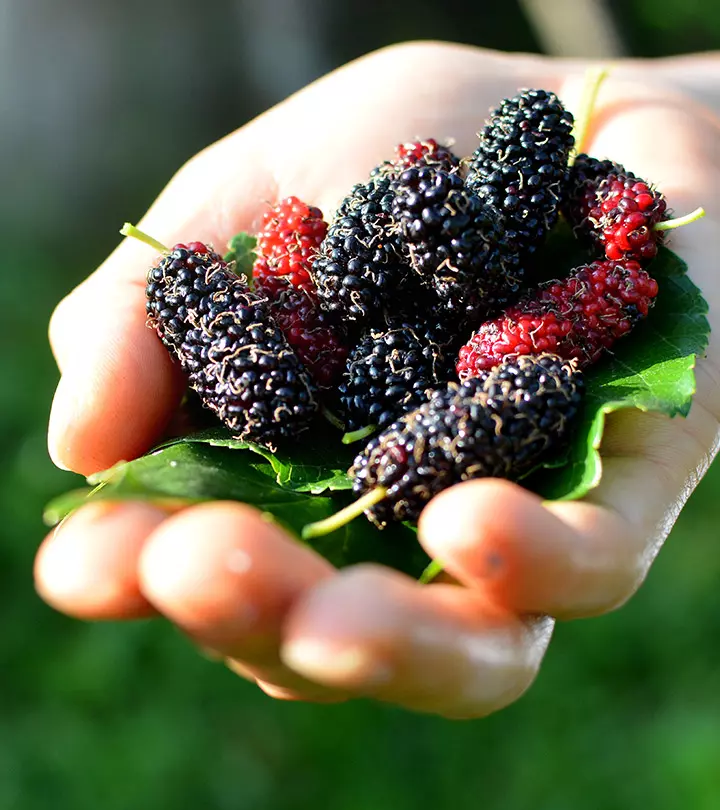
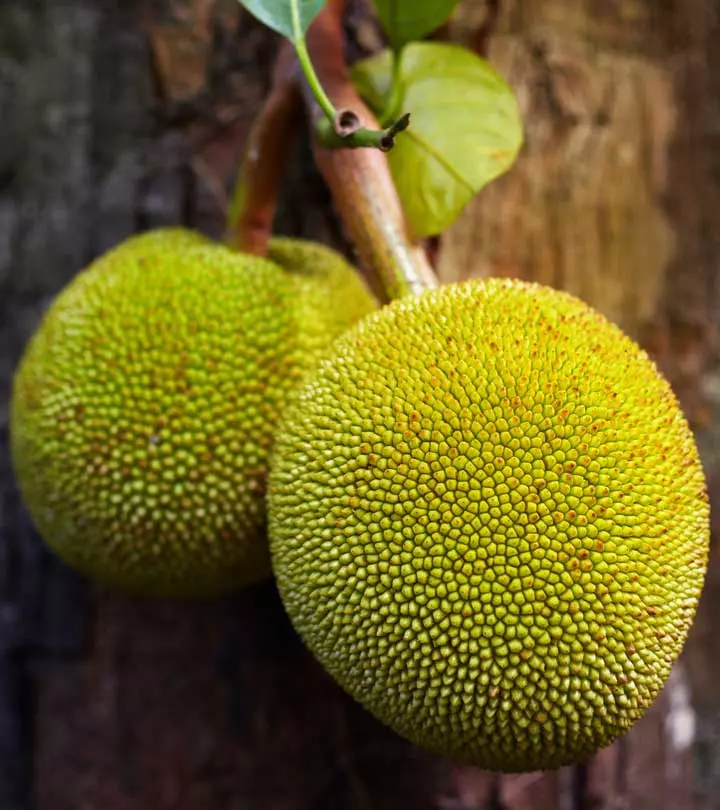





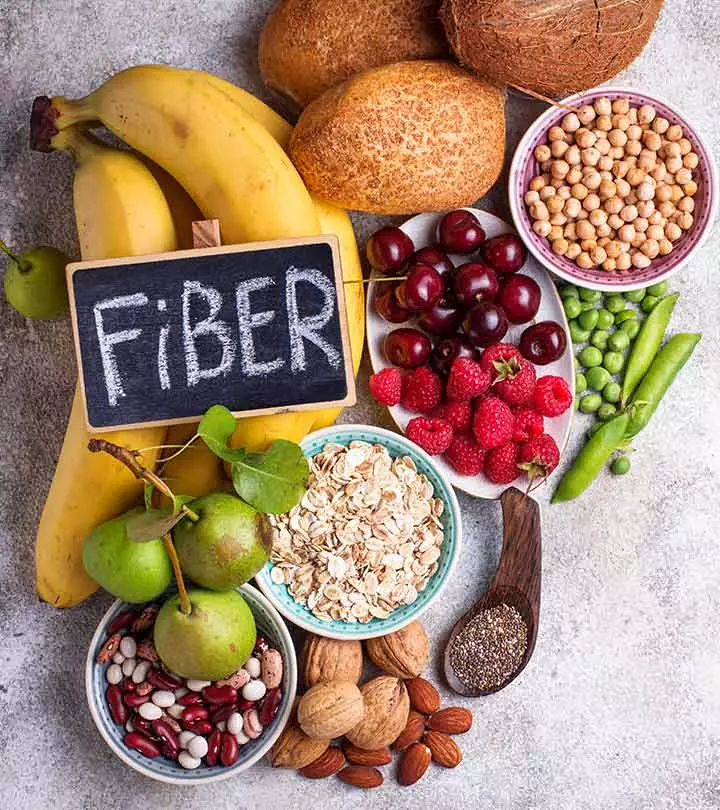
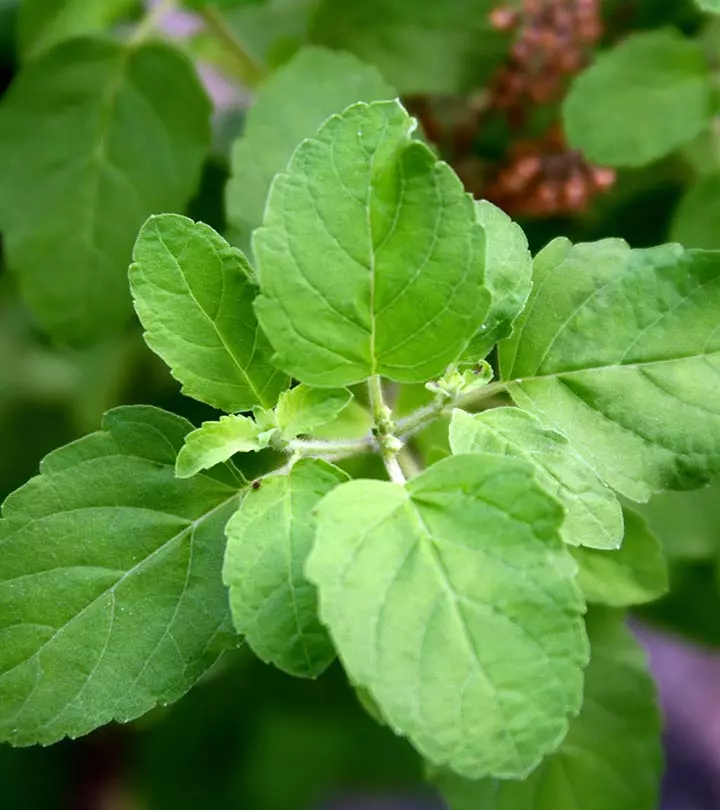
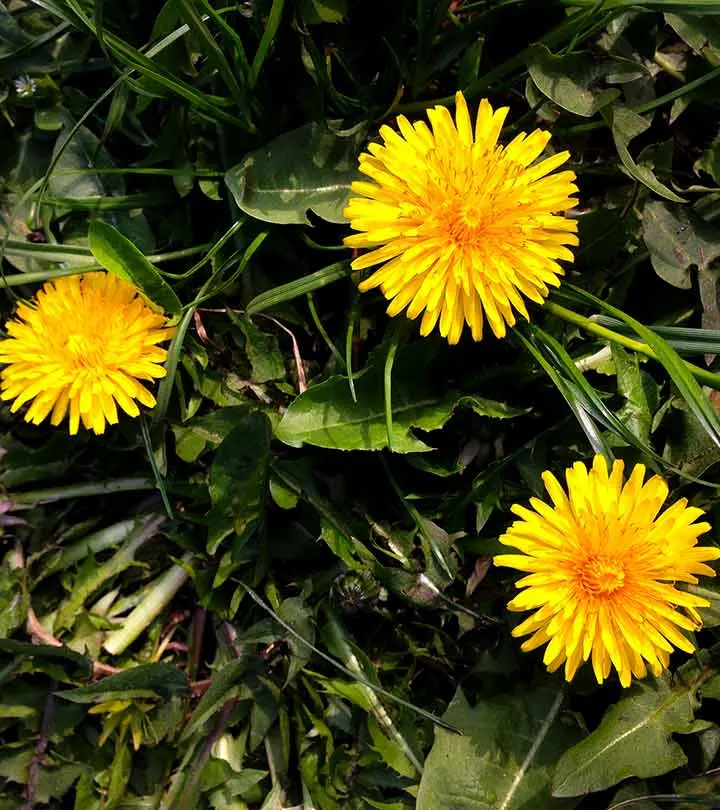

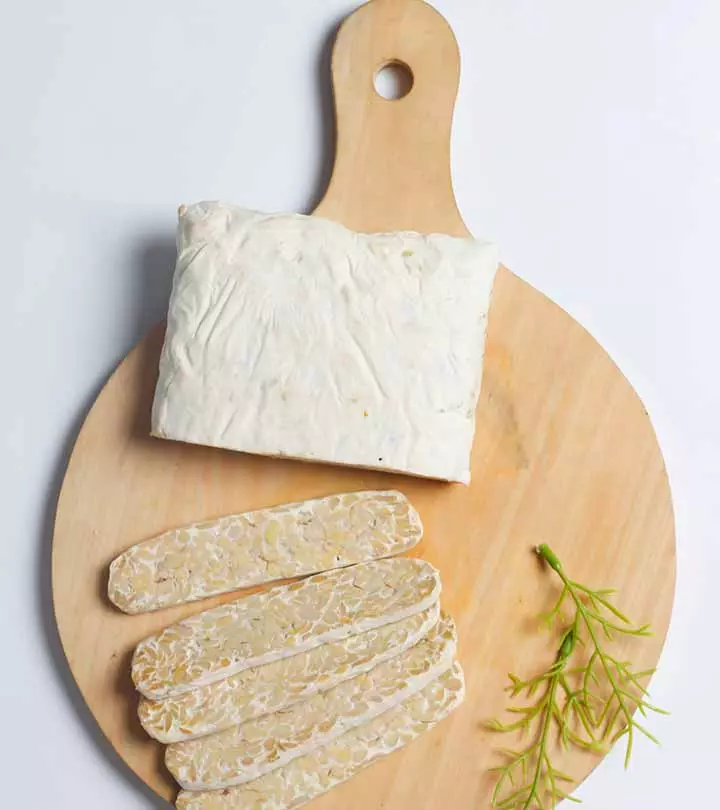
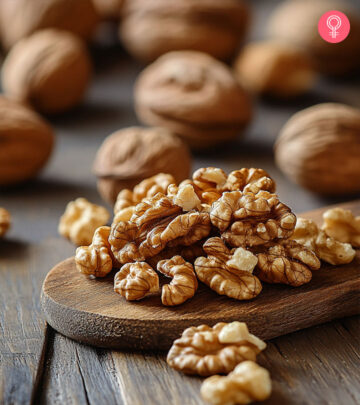

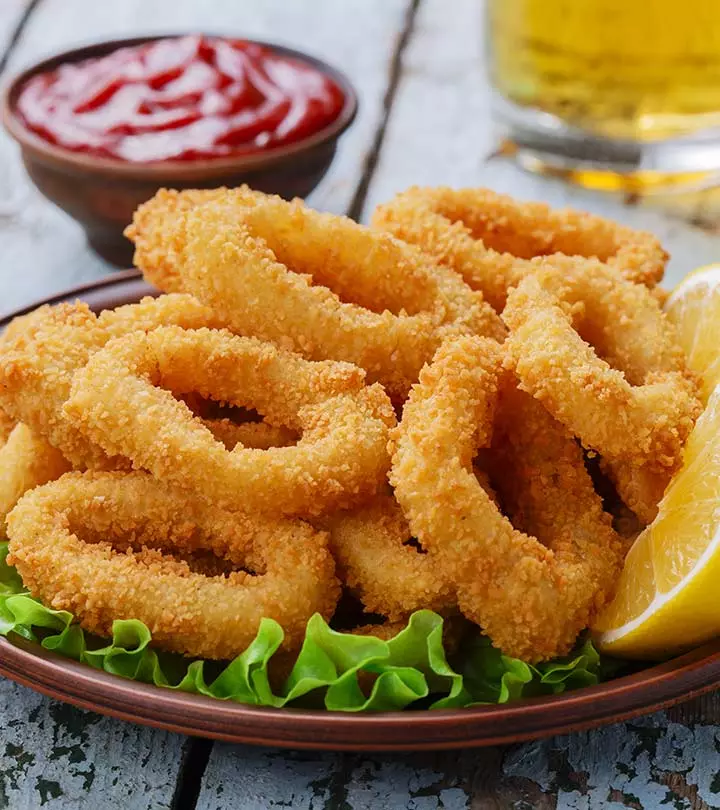



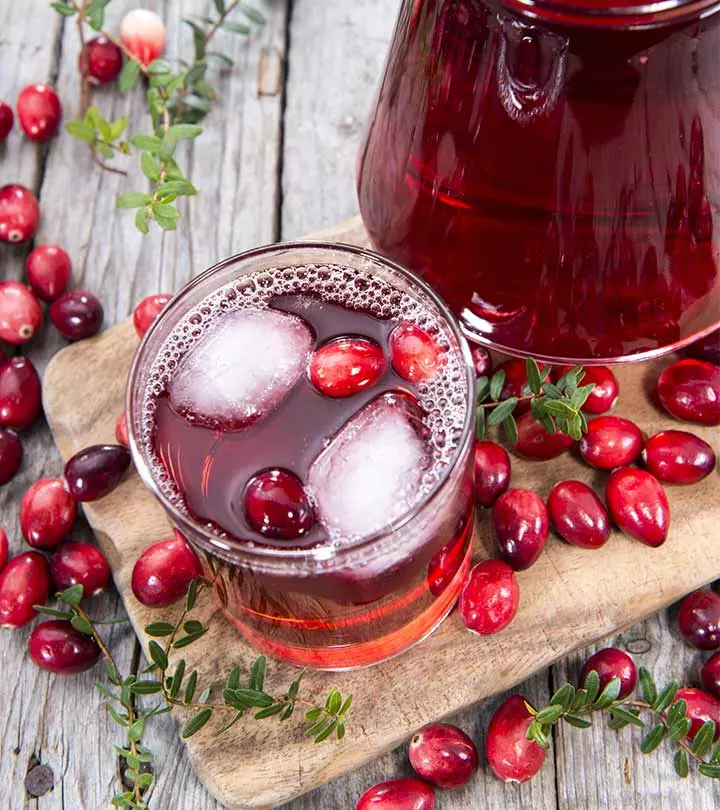
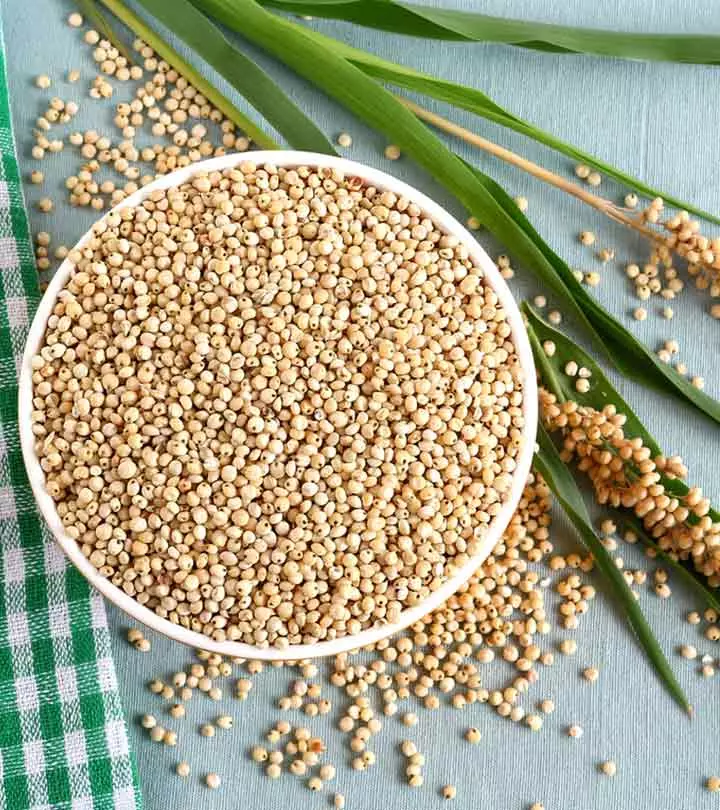
Community Experiences
Join the conversation and become a part of our empowering community! Share your stories, experiences, and insights to connect with other beauty, lifestyle, and health enthusiasts.